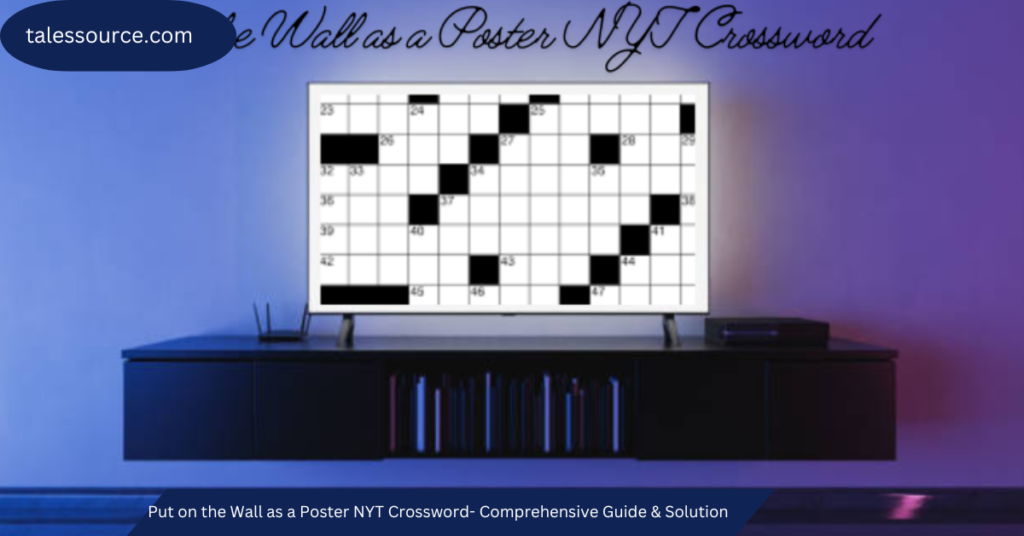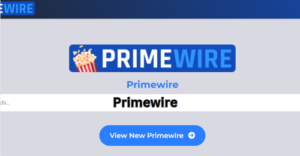Put on the Wall as a Poster NYT Crossword- Comprehensive Guide & Solution

Crossword puzzles, particularly the NYT Crossword, offer an enjoyable challenge that keeps your mind sharp and engaged. For many, solving puzzles is a daily ritual. One popular clue that often leaves people stumped is “Put on the wall as a poster.” Whether you’re an avid crossword enthusiast or a casual player, understanding the nuances behind this clue can enhance your puzzle-solving experience.
In this comprehensive article, we’ll dive deep into the clue “Put on the wall as a poster NYT crossword,” providing a solution and detailed insights into crossword-solving strategies. Whether you are new to the crossword puzzle world or looking to master it, this guide is designed to improve your skills and help you solve such clues effectively.
Understanding the Clue
When solving a crossword puzzle, particularly from the New York Times, context is key. This clue, “Put on the wall as a poster,” requires the solver to think beyond the literal meaning of words and delve into common phrases or actions related to putting a poster on the wall. In this instance, the key lies in interpreting the verb accurately.
Common Solutions for “Put on the Wall as a Poster”
- “Pin” – Refers to using thumbtacks or pins to place a poster on the wall.
- “Hang” – A more general term for suspending an object (in this case, a poster) on the wall.
- “Paste” – Commonly used when posters are glued or pasted on a wall, often in outdoor settings.
Among these, the most common answer for the NYT Crossword puzzle is “Pin” or “Hang,” both of which can succinctly fit the allotted space in a crossword grid.
How Crossword Solvers Approach Such Clues
- Consider Synonyms: Think of various synonyms for “put,” such as hang, affix, mount, pin, or tape.
- Assess Word Length: Crosswords provide a specific number of spaces for the solution. If the clue asks for a three-letter word, “Pin” becomes a plausible option.
- Use Crossings: Many times, other solved clues (referred to as crossings) will provide hints that narrow down the possible answers. For example, if the first letter is “P,” “Pin” becomes more likely than “Hang.”
Why Solving Crossword Puzzles Improves Brain Health
Solving crossword puzzles is more than just a fun hobby. It’s an activity known to stimulate brain function and improve cognitive skills. Let’s explore why engaging with puzzles like the Put on the Wall as a Poster NYT Crossword benefits your mental health.
Enhanced Problem-Solving Abilities
When you engage inPut on the Wall as a Poster NYT Crossword, your brain is consistently working to decode clues, make connections, and recall knowledge. This mental workout helps in developing critical thinking and problem-solving skills that apply to daily life.
Improved Vocabulary and Language Skills
Put on the Wall as a Poster NYT Crossword, particularly those from well-known sources like the New York Times, challenge solvers with diverse vocabulary and intricate wordplay. Over time, your exposure to new words and phrases increases, enhancing your language skills. Whether it’s learning a new synonym or understanding word roots, puzzles provide an educational boost.
Stress Relief and Relaxation
Crossword puzzles offer a meditative experience. Focusing on clues helps to temporarily set aside daily worries and distractions. The satisfaction that comes from solving a tricky clue, like “Put on the Wall as a Poster NYT Crossword,” can also contribute to a sense of achievement and stress relief.
Crossword Strategies for Beginners
- Start with the Easy Clues: Begin with the simplest clues to build momentum. These easy wins will help you fill the grid and provide hints for more challenging clues.
- Work with Crossings: Use intersecting words to your advantage. Solving one clue can often provide a crucial letter for an adjacent one.
- Think Outside the Box: Some crossword clues are designed to mislead. Don’t take every clue at face value—be prepared for puns, double meanings, and wordplay.
- Consult a Dictionary: If you’re stuck, don’t hesitate to use a dictionary or online tool. With practice, your need for external resources will diminish as your skills improve.
The Evolution of Crossword Puzzles in Popular Culture
Put on the Wall as a Poster NYT Crosswords have become a staple in modern culture, with publications like the New York Times consistently offering high-quality puzzles for a dedicated audience. But how did crossword puzzles become such a beloved pastime?
A Brief History of Crossword Puzzles
The first known crossword puzzle was published in 1913 by Arthur Wynne in the New York World newspaper. Since then, crossword puzzles have grown into a global phenomenon, with millions of people solving puzzles daily.
The New York Times began publishing its famous crossword puzzle in 1942, and it has since become one of the most respected and widely solved puzzles in the world. Known for its challenging clues and sophisticated structure, the Put on the Wall as a Poster NYT Crossword sets the bar high for puzzle enthusiasts.
The Rise of Crossword Apps and Online Platforms
With the advent of technology, solving Put on the Wall as a Poster NYT Crossword puzzles has become more accessible. Today, many people solve puzzles on mobile apps or online platforms, making it easier than ever to enjoy this hobby on the go. Whether you’re a commuter looking to pass the time or someone who likes to unwind at home, crossword apps have revolutionized the way people engage with puzzles.
Analyzing the Difficulty of NYT Crossword Clues
The New York Times Crossword varies in difficulty depending on the day of the week. Monday puzzles are typically the easiest, while Saturday’s puzzle offers the most challenging clues. The Sunday puzzle, though larger, is somewhere in between in terms of difficulty.
Why the NYT Mini Crossword is Popular
The NYT Mini Crossword, where “Put on the Wall as a Poster NYT Crossword” is commonly found, offers a quick and satisfying challenge that can be solved in a matter of minutes. The Mini puzzles are perfect for those who want a crossword experience without committing to a longer puzzle. Despite their smaller size, they still provide stimulating clues and engaging wordplay.
How to Master NYT Crossword Puzzles
To truly excel at solving Put on the Wall as a Poster NYT Crossword puzzles, consistent practice is key. Beyond simply solving puzzles, there are several tips that can improve your skill level:
Expand Your Knowledge Base
Put on the Wall as a Poster NYT Crossword puzzles often reference obscure facts, historical figures, and uncommon words. Broadening your general knowledge through reading, trivia, and exposure to new topics will give you a strong foundation for solving even the trickiest of clues.
Familiarize Yourself with Common Clues
Over time, you’ll notice recurring clues and patterns in Put on the Wall as a Poster NYT Crossword puzzles. For example, many puzzles feature clues related to geography, famous personalities, or abbreviations. Recognizing these common clues will make solving future puzzles easier.
Stay Consistent
Consistency is essential when it comes to mastering crosswords. Make solving puzzles a daily habit, and over time, you’ll find that your speed and accuracy improve.
Conclusion:
The Put on the Wall as a Poster NYT Crossword puzzle, whether full-size or Mini, offers hours of fun and a way to sharpen your mind. Clues like “Put on the wall as a poster” might seem tricky at first, but with the right strategies and consistent practice, you’ll be solving them in no time. Remember, crosswords are not only about finding the correct answer but enjoying the process of thinking, exploring, and learning.
FAQs
1. What is the most common answer for the clue “Put on the wall as a poster” in the NYT Crossword?
The most common answer for this clue is “Pin” or “Hang.”
2. What day of the week is the NYT Crossword most challenging?
Saturday is known for having the most difficult puzzles, while Monday puzzles are generally the easiest.
3. How can I improve my crossword-solving skills?
Practice daily, expand your general knowledge, and familiarize yourself with common clues to improve your skills over time.
4. Are NYT Mini Crosswords harder than full-size puzzles?
The Mini Crossword puzzles are usually quicker and easier than full-size ones, but they still offer engaging and challenging clues.
5. What are some common strategies for solving crossword puzzles?
Start with the easy clues, use crossings, think outside the box, and expand your vocabulary for more success in solving puzzles.
6. Can solving crossword puzzles help reduce stress?
Yes, solving crossword puzzles can serve as a relaxing activity, providing stress relief and a sense of achievement.
7. Are there mobile apps for solving NYT Crossword puzzles?
Yes, the New York Times offers an official crossword app, and there are several other apps that provide daily crossword puzzles.
8. What’s the best way to handle tough crossword clues?
If you encounter a tough clue, move on to easier clues first and return to the difficult one later with more crossings filled in.
9. How does the NYT Crossword vary by day?
The difficulty of the NYT Crossword increases as the week progresses, with Monday being the easiest and Saturday being the hardest.
10. What is the significance of crossword puzzles in improving cognitive function?
Crossword puzzles engage the brain in problem-solving, enhance vocabulary, and provide a mental workout that helps maintain cognitive health.





